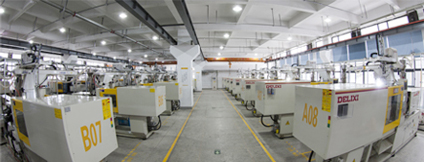Hangzhou Delixi Group Co.,Ltd.
Featured News
At Utilities Dynamics, we are constantly surprised by how many businesses have never considered the benefits of LED lighting. It is simple math—if your utility usage was 50,000 watts and you cut it down to 5,000 watts, you’re going to save a lot of money. It’s the business we are in, and it’s what we do best.
“But how,” we are asked, “how does an LED perform better with less energy?” It’s no magic trick, but today we are going to dive deep into the technology behind LED lighting and show you how small changes amount to huge savings for you and your company.
A Little Science Lesson
Let’s start from the top—LED stands for Light Emitting Diode. A diode is a semi-conductor device (a solid substance that can conduct electricity) with two terminals that allow the flow of current in one direction.
As electrons (negatively charged sub-atomic particles that are the primary carrier of electricity in solids) pass through this type of semiconductor, it converts the energy from that electricity into light. It’s not magic, but it can seem like it.
LED’s vs. The World
Where LED’s gain their advantage over other types of light fixtures is in how efficient these diodes are in converting the electrical energy into light. Incandescent light bulbs (the ones everyone grew up with) carry an electrical charge through a small piece of tungsten until it burns white hot, producing light. Unfortunately, this means they waste approximately 90% of their energy as heat, instead of light.
Read that again—the most common type of light bulb wastes over 90% of the energy it draws off your systems by converting the energy into heat rather than light.
Halogen
Halogen light bulbs rely on a special gas that causes vaporized tungsten to be deposited back into the filament that burns bright at their center (just like a typical incandescent bulb). This gives them a longer lifespan, but they also burn much hotter than typical bulbs, off-setting their efficiency with the need for additional cooling.
CFL
CFL bulbs, or compact fluorescent light bulbs, are the pig-tailed bulbs you’ve seen around in the last few years. A CFL emits light by directing an electric current through a tube that contains argon and some mercury vapor, which generates UV light. This UV light excites the fluorescent coating on the inside of the tube, which in turn emits visible light.
Seem complicated? It is. While energy efficient, the chemicals inside the tubing are not environmentally friendly. Utility companies offer rebates for using LED’s because of their environmentally friendly efficiency and construction—no chemicals required.
CFL bulbs are known for begin temperamental with various control units. Plus, they are noisy. Older CFL bulbs used large magnetic ballasts that buzzed loudly, which can be very annoying in large facilities where multiple ballasts are located.
LED – Leveraging Energy Demands
LED’s represent a paradigm shift in your energy budget. Not only can they cut your expenditures on lighting drastically, they can cut down on the maintenance costs involved with replacing burnt out bulbs. With an operational lifespan exceeding 100,000 hours, you’ll save money by allocating valuable time and effort elsewhere.
This article comes from utilitiesdynamics edit released

The IoE Ushers in Opportunity for The Last Product Recall
In our consumer-centric society, product recall announcements grab headlines and...
 86 - 571 - 85221566
86 - 571 - 85221566
 Login/Register
Login/Register

